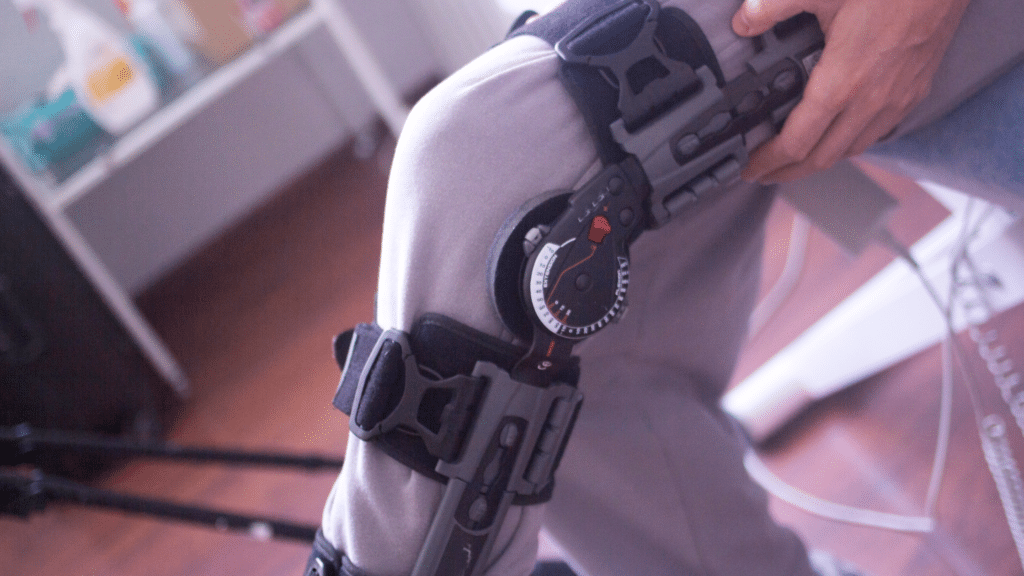The anterior cruciate ligament (ACL) is a vital structure in the knee joint that provides stability and support during physical activities. However, ACL injuries are quite common, especially among athletes and individuals who engage in high-impact sports. Understanding the causes, treatment options, and recovery process for ACL injuries is essential for anyone who wants to maintain their knee health.
Understanding the Anatomy of the ACL
Before delving into the causes and treatment of ACL injuries, it is important to have a basic understanding of the anatomy of the ACL. The ACL is one of the four major ligaments in the knee joint, connecting the femur (thigh bone) to the tibia (shinbone). It runs diagonally in the middle of the knee, preventing excessive forward movement of the tibia and rotational movements of the knee joint. The ACL also plays a significant role in stabilizing the knee during jumping, landing, and pivoting activities.
Common Causes of ACL Injuries
ACL injuries can occur due to various reasons, and they are often associated with sudden stops, changes in direction, or direct blows to the knee. Some common causes of ACL injuries include:
- Sports Injuries: Athletes who participate in sports that involve jumping, pivoting, and sudden changes in direction are at a higher risk of ACL injuries. Sports like basketball, soccer, skiing, and football are particularly known for causing ACL injuries.
- Accidents or Falls: ACL injuries can also result from accidents or falls that involve a direct impact on the knee joint, such as car accidents or tripping and falling.
- Overuse or Degeneration: Although less common, ACL injuries can also occur gradually over time due to repetitive stress on the knee joint. This is more common in individuals who engage in activities that require repetitive knee movements, such as long-distance running or dancing.
Symptoms and Signs of an ACL Injury
Recognizing the symptoms and signs of an ACL injury is crucial for early diagnosis and prompt treatment. Some common symptoms of an ACL injury include:
- A Popping Sound: Many individuals report hearing a distinct popping sound at the time of injury, which is often followed by intense pain.
- Swelling: Swelling in the knee joint is a common symptom of an ACL injury. The swelling generally occurs within a few hours after the injury and can cause stiffness and limited range of motion.
- Instability: ACL injuries often result in knee instability, making it difficult to bear weight or engage in physical activities that require knee stability.
Treatment Options for ACL Injuries
The treatment options for ACL injuries depend on the severity of the injury and the individual’s lifestyle and goals. Some of the common treatment options include:
- Conservative Management: For mild ACL injuries or individuals who do not engage in high-demand activities, conservative management may be recommended. This typically involves rest, ice, compression, and elevation (RICE), along with physical therapy to strengthen the muscles around the knee joint.
- Surgical Intervention: In cases of severe ACL injuries or individuals who want to return to high-impact sports, surgical intervention may be necessary. ACL reconstruction surgery involves replacing the torn ligament with a graft from another part of the body or a donor graft. Following surgery, a comprehensive rehabilitation program is crucial for a successful recovery.
Rehabilitation and Recovery
Rehabilitation and recovery play a vital role in the overall outcome of ACL injuries. The main goals of rehabilitation are to restore knee function, regain strength and stability, and prevent future injuries. The recovery process typically involves several stages, starting with initial rest and protection of the knee joint, followed by exercises to improve range of motion, strength, and balance. Gradually, individuals progress to more advanced exercises and eventually return to their regular activities with the guidance of a physical therapist or sports medicine professional.
Preventing ACL Injuries
While ACL injuries may not always be preventable, there are steps individuals can take to reduce their risk. Some preventive measures include:
- Proper Conditioning: Engaging in regular strength and conditioning exercises can help improve overall knee stability and reduce the risk of ACL injuries.
- Proper Technique: Learning and practicing proper techniques for sports and physical activities can significantly reduce the risk of ACL injuries. This includes proper landing mechanics, pivoting techniques, and body control during movements.
- Using Protective Gear: Wearing appropriate protective gear, such as knee braces or stabilizing sleeves, can provide additional support and reduce the risk of ACL injuries, especially during high-impact activities.
Taking Care of Your ACL and Overall Knee Health
ACL injuries can be debilitating and have a significant impact on an individual’s quality of life. Understanding the causes, treatment options, and recovery process for ACL injuries is essential for anyone who wants to take care of their ACL and overall knee health. By following preventive measures, seeking prompt treatment, and committing to a comprehensive rehabilitation program, individuals can minimize the risk of ACL injuries and ensure a successful recovery.
If you suspect an ACL injury or want to learn more about knee health, consult with a healthcare professional or sports medicine specialist for personalized guidance and treatment options.

